For those that live in milder climate zones, heating your home is a necessity. However, not all heating options are created equal. Since they all have different capabilities, they have vastly different costs too. So, if you’re looking for a new heating system for your home, it is vital to know the differences.
This guide compares all the heating options for your home, how much they cost, and how their features and heating capabilities compare. Continue reading to learn more!
Cost-Effective Heating Summary Table
Use this table to compare the cheapest heating options for your home. You can easily compare each heating system’s upfront cost, installation cost, specifications, and efficiency.
Scroll past the table for in-depth information on the cheapest heating options for your home.
| Heating System | Average installation cost | Average annual heating cost | Efficiency |
| Geothermal heat pumps | $18,000 to $45,000 | $300 to $700 | Up to 400% |
| Standard (air-source) heat pumps | $10,000 to $20,000 | $550 to $1,200 | Nearly 100% (declining efficiency at temperatures lower than 30ºF) |
| Ductless mini-split heat pumps | $3,000 to $5,000 per zone | $200 to $325 per zone | Nearly 100% (declining efficiency at temperatures lower than 30ºF) |
| Gas furnaces | $2,250 to $3,600 | $600 to $2,000 | Up to 98% AFUE |
| Gas boilers | $2,500 to $10,000 | $500 to $1,800 | Up to 96% AFUE |
| Space heaters | $30 to $300 | Variable, depends on the model, size, amount of use | 75 to 85% |
The Cheapest Ways To Heat Your Home
In the winter, heating your home is a necessity. Without a heater, you and your family would be shivering, plus your home can be damaged. Frozen pipes and the leaks they cause are costly tragedies.
While heating systems are needed to keep your family safe and your home in good condition, getting a new one is an expensive endeavor.
Thankfully, we’ve put together this guide to walk you through the cheapest types of heating systems and their capabilities.
Here are your options:
Geothermal Heat Pumps
Geothermal heat pumps are arguably the most efficient methods to heat your home.
According to the U.S. Environmental Protection Agency (EPA), geothermal heat pumps can reduce energy costs by nearly 50% compared to traditional fuel heating systems (like a gas furnace or boiler).
Note: Geothermal heat pumps are the most efficient heating systems in existence. They can have an efficiency of up to 400%.
Surely you can’t have an efficiency of over 100%, right? Wrong. Ground-source heat pumps achieve high efficiency because they don’t make the heat; they just transfer it from the ground to your home.
An average geothermal heat pump takes 1 BTU of energy to move 4 BTUs of heat from the ground into your home, which translates to a 400% efficiency. Trust us; we put in 110% effort when we did the math.
How Geothermal Heat Pumps Work
Geothermal heat pumps, or ground-source heat pumps, work by extracting heat from the ground and pumping it into your home. The Earth naturally contains heat, and geothermal heat pumps use underground pipes filled with refrigerant to capture the heat and use it to warm your home.
Geothermal heat pumps work similarly to conventional heat pumps in that they use the vapor-compression refrigeration cycle to transfer heat from one location to the other. This closed-loop cycle uses the below components to get the job done:
- Compressor
- Condenser
- Refrigerant lines
- Thermal expansion valve
- Reversing valve
- Evaporator
- Indoor blower
The compressor pumps the refrigerant through refrigerant pipes (it also increases the refrigerant’s pressure which increases its temperature too). The pipes go underground and work just like a condenser would– the cold refrigerant in them collects heat from underground.
The warm refrigerant then flows to the indoor coils which sit inside the home. Then, the blower forces air across the evaporator coils. The heat from the refrigerant transfers to the air and circulates throughout your home via the ductwork.
Note: Since geothermal heat pumps use the Earth’s natural heat to warm your home, they have the least environmental impact of any heating system (especially when you compare them to fuel-burning systems).
Like air conditioners and other heat pumps, geothermal systems use compressed refrigerant gas to transfer heat.
Typically, the refrigerant stays within the heat pump. But, if the system develops a leak, the refrigerant will enter the atmosphere. Refrigerants, such as R-134a, common in residential heat pumps, are hydrofluorocarbons and deplete ozone.
Although R-134a has a small ozone depletion potential (ODP) and lower global warming potential (GWP), it still has a negative impact on the environment if accidentally released.
Geothermal Heat Pump Costs
Geothermal heat pumps have a high installation cost– $18,000 to $45,000 on average, depending on the size and location. A significant portion of the installation cost is excavating (digging) to bury the refrigerant pipes of the geothermal system underground.
For an average 2,000 square foot home, a geothermal heat pump costs around $30 to $55 per month. However, your price may be lower or higher depending on your location and local electricity costs.
Geothermal Heat Pumps Pros and Cons
Geothermal heat pumps are arguably the most efficient heating option for your home. However, they do have high installation costs. Here are its pros and cons.
Pros
- Ultra-low energy costs (the heat from the ground is “free”)
- Can cool your home in the summer
- Amazing energy efficiency
- No dangers of carbon monoxide poisoning
Cons
- High installation costs
- Slight risk of refrigerant leaks
- Potentially high repair costs
- May require supplemental heating or cooling in extreme weather events
Standard Heat Pumps
Standard heat pumps, or air-source heat pumps, are the most common type of heat pumps in the U.S. They operate and look similar to central air conditioners but provide both heating and cooling.
How Air-Source Heat Pumps Work
Exactly like central AC units and geothermal heat pumps, they use the vapor-compression refrigeration cycle to heat and cool your home. They are “split systems,” which include an indoor unit and an outdoor unit that exchange refrigerant with each other to warm and cool your home.
They contain all the significant components of a central AC system:
- Condenser (outdoor unit)
- Compressor
- Condensing coils
- Thermal expansion valve
- Air handler (indoor unit)
- Evaporator coils
- Blower
- Refrigerant lines
Along with these components, an air-source heat pump also has a reversing valve. It changes the direction the refrigerant flows, which is how the heat pump switches between heating and cooling modes.
The heat pump moves compressed refrigerant at various temperatures and pressures throughout the major components to warm your home. Here are the basics of how it works:
- Heating mode – the heat pump uses cool, low-pressure refrigerant to absorb heat from the outside air. The warm refrigerant is then compressed and pumped into the indoor air handler to warm the air in your home and circulate it through the ductwork.
Note: Even cold outdoor air contains heat, which is why heat pumps can still heat your home when the air is cold outdoors.
- Cooling mode – the heat pump uses cold, low-pressure refrigerant to absorb heat from the air in your home. Warm inside air blows across the cold, refrigerant-filled evaporator coils and collects heat from the air.
The air cools and blows throughout your home through the ductwork, cooling it. The warm refrigerant dumps its heat outdoors through the condenser coils on the outdoor unit.
Air-Source Heat Pump Costs
On average, air-source heat pumps cost between $10,000 to $20,000, including installation. The price you pay will vary depending on the size of your heat pump, the brand and model, its efficiency, and the complexity of the installation.
Annual heating costs for air source heat pumps range from $550 to $1,200 depending on several factors, including:
- Efficiency of the heat pump
- The heat pump’s size (BTUs)
- Outdoor temperatures
- Your home’s insulation
- Your thermostat’s setpoint
- Your home’s size
- Your local electricity costs
Like geothermal heat pumps, air-source units have a small risk of refrigerant leaks, which can harm the environment and your health. Unlike geothermal heat pumps, air-source units have a lower installation cost since it requires no excavation work.
Air-Source Heat Pumps Pros and Cons
Air-source heat pumps are convenient systems that provide cooling and heating to every room in your home (all rooms that connect to the ductwork). However, they have a high installation cost. Here’s their main pros and cons:
Pros
- Cools and heats your home
- Reasonable upfront costs (considering it works as a heating and cooling system)
- No risks of CO leaks
- Great energy efficiencies
- Heats/cools the entire home through ductwork
Cons
- May require supplemental heating through space heaters on freezing days
- Higher upfront costs than other heating options (example: gas furnace)
- Small chance of refrigerant leaks
- Loss of efficiency in extreme hot or cold
- Generally, higher maintenance and repair costs compared to gas furnaces
Mini Split Heat Pumps
Ductless mini-split heat pumps are just small versions of air-source heat pumps. However, they only heat and cool a single zone (or room). Mini-splits have an outdoor unit, which sits next to the home outdoors, and an indoor unit.
The outdoor unit connects to the indoor unit, which hangs on a wall indoors, with refrigerant lines and wiring.
How Ductless Mini-Split Heat Pumps Work
Mini-splits use the same vapor-compression refrigeration cycle and major components of an air-source heat pump to provide warm air into your home, just in a smaller package. As their name implies, ductless mini-split units do not connect to ductwork.
Since mini-split systems do not experience losses through ductwork, they are one of the most energy-efficient heating systems around. That is until the outdoor temperature gets too low. Starting around 30ºF, an air source heat pump (including mini-splits) will lose efficiency as the temperature decreases.
This efficiency loss is because there is less heat in the air, so the heat pump must work harder and longer to extract heat from the outside.
Ductless Mini-Split Costs
Ductless mini-split heat pumps cost between $3,000 to $5,000 on average for one zone. Additional zones cost around $1,500 to $2,500 each. One outdoor unit can connect to multiple indoor units to heat and cool additional zones, which means you don’t have to buy an extra outdoor unit for every zone.
On average, ductless mini-split heat pumps have annual electricity costs of $200 to $325 per zone. These estimations are based on average electricity costs from the U.S. Department of Energy (DOE).
However, your ductless mini-split heat pumps operating costs will vary based on:
- Size (BTU)
- SEER & COP (efficiency)
- Outdoor temperatures
- Zone size and insulation
- Your thermostat’s setpoint
- Your local electricity costs
Ductless Mini-Split Heat Pumps Pros and Cons
Ductless mini-split heat pumps are very efficient systems and have low operating costs. However, they only heat and cool single rooms or zones. Like other heat pumps, they have a small environmental impact, with a slim chance of their refrigerant escaping into the environment.
Here are their main advantages and disadvantages:
Pros
- Cools and heats your home
- Low upfront costs
- No ductwork required
- No risks of CO leaks
- Significant energy efficiencies & low monthly cost
- Zone control; independent temperature control for each zone
Cons
- May require supplemental heating through space heaters on extremely cold days
- Takes up wall space; not Feng Shui friendly
- Only cools/heats a single-zone
- Slight chance of refrigerant leaks
- Loss of efficiency in extreme hot or cold
- Uneven heating and cooling
Gas Furnace
Gas furnaces are the most common type of heating system in the U.S. They’re most prevalent in climate zones with freezing temperatures, such as the Midwest and Northern U.S.
There are various capacities, efficiencies, speeds, and other features available on gas furnaces. However, they all perform the same function– combust natural gas to warm the air in your home.
How Gas Furnaces Work
Gas furnaces work by combusting natural gas or propane in a burner. A heat exchanger, located above the burner, collects the heat from the combustion. Then, the blower sucks in cool air from your home and blows it across the heat exchanger.
The air collects the heat from the heat exchanger. Then it blows through your ductwork into the supply vents of every room in your home. This process repeats until your thermostat’s setpoint is reached.
At the same time, all of the combustion gas, which contains carbon monoxide, exhausts from your home through the flue. The flue is essentially a chimney for your furnace.
Gas furnaces with high-efficiency ratings have secondary heat exchangers that recover additional heat from the exhaust to heat your home further. As such, they usually cost more.
Besides a gas-burning furnace, you could purchase an electric furnace. However, electric furnaces use way more energy to run. As such, their yearly energy costs are significantly more than gas furnaces.
Gas Furnaces Costs
Gas furnaces have an average cost of $750 to $1,200, with installation costs ranging from an additional $1,750 to $2,400. In total, you can expect to pay anywhere from $2,250 to $3,600 for a new furnace and installation.
Keep in mind; gas furnaces have no way to cool your home in the summer as heat pumps do. Therefore, you will have to buy an air conditioner to pair with a gas furnace if you want both heating and cooling in your home.
The average annual cost to run a gas furnace ranges from $600 to $2,000. The yearly operating costs vary significantly due to many variables, including:
- The length of winter in your region
- The average outdoor temperatures
- The AFUE (annual fuel utilization efficiency) and capacity (BTUs) of your furnace
- The setpoint on your thermostat
- The price of natural gas in your region
You can find your price of natural gas from your local utility company or an average cost for your region from the U.S. Energy Information Administration (EIA).
Gas Furnace Pros and Cons
Gas furnaces burn natural gas to heat your home. Natural gas burns relatively cleanly but still has a small impact on the environment. However, in frigid winters, they are the best and lowest-cost way to keep your house toasty.
Here are the main advantages and disadvantages of gas furnaces:
Pros
- Low energy bills in cold weather (compared to heat pumps)
- High energy efficiency
- Typically easy, low-cost repairs and maintenance
- Large heat capacity (BTUs) heats well in frigid winters
Cons
- Does not cool your home (like a heat pump)
- Usually noisier than a heat pump
- Uses fossil fuels directly, which has negative environmental impacts
- Risk of gas and carbon monoxide leaks
Gas Boilers
Before gas furnaces’ efficiency was perfected, residential gas boilers were the most common heating system (after wood-burning stoves). These days, boilers are still common, but typically new homes do not have them due to their higher upfront costs.
Like gas furnaces, the Federal Energy Management Program (FEMP) requires minimal efficiency requirements on designs of new residential boiler systems. This means homeowners could expect at least an 84% AFUE rating on a new boiler system; the maximum efficiency for a gas boiler is around 96% AFUE.
Gas boilers also have electric counterparts. However, just like electric furnaces, electric boilers are far more expensive to operate than natural gas-burning systems.
How Gas Boilers Work
Gas boilers work similarly to gas furnaces in that they combust natural gas to heat your home. However, the way the heat exchanges to the air inside your home differs.
A gas burner heats water to very high temperatures, often above the boiling point (hence the name “boiler”).
A pump circulates the hot water and steam mixture throughout your home to either baseboard radiators, cast iron radiators, or a hydronic heating system (or radiant heat flooring system).
Boilers provide a very even heat distribution inside the home, plus they dry out the air less than gas furnaces.
Gas Boiler Costs
Gas boilers cost an average of $2,500 to $10,000, including installation (assuming you have heating lines and radiators). Their pricing varies depending on the following factors:
- Capacity
- Efficiency
- Brand and model
- Local labor costs
The average annual cost to heat a home with a gas boiler ranges between $500 to $1,800, depending on the size of the boiler and its efficiency.
Gas Boiler Pros and Cons
Gas boilers have higher upfront costs than most heating systems but have low energy costs and excellent heat distribution. Use the below table as a reference for the main pros and cons of gas boilers.
Pros
- No ductwork required
- Better indoor air quality and humidity levels
- Independent temperature control of each room or zone
- Heated water and steam is reused
- Stable temperatures (but slower response time)
Cons
- Does not cool your home (like a heat pump)
- Uses fossil fuels directly, which has negative environmental impacts
- Risk of gas and carbon monoxide leaks
- High upfront costs
- Potential for water leaks
Space Heaters
Most homeowners use a central heating system to keep their homes warm during the winter. However, if you have a drafty room or an area that is always too cold, you might resort to using space heaters.
Space heaters are a safe and effective way to heat your home, and you can use them to take off some of the work of your HVAC system.
For example, you can lower your thermostat’s setpoint and run a space heater in your home office if you work from home. This way, you’re not heating your whole house, only the space you’re using. As such, this typically uses less overall energy and lowers your heating bills.
How Space Heaters Work
Most space heaters work by converting electricity into heat. Here are the most efficient type of space heaters and how they work:
- Infrared heaters – It converts electricity into radiant heat. Radiant heat directly transfers from the heater to the object around it instead of heating the air.
- Oil-filled radiator heaters – Electricity heats metal that warms oil within the heater. The heat then transfers to the air in the room.
- Convection heaters – It uses electricity to heat metal coils. Air is blown across the hot coils to transfer heat to the room.
- Propane heaters – combusts propane to create heat and warm the room.
Space Heaters Costs
Here are the average costs of the various types of space heaters:
| Space Heater Type | Average Cost |
| Infrared Heaters | $50 to $300 |
| Oil Filled Radiator Heaters | $70 to $130 |
| Convection Heaters | $30 to $80 |
| Propane Heaters | $50 to $175 |
The various space heaters will vary in cost depending on their heating capacity measured in BTUs (British Thermal Units) and various other factors, such as the mounting type for convection heaters.
Click here to calculate how much money your electric space heater is costing you.
Space Heaters Pros and Cons
Pros
- Quick heating response time
- Excellent method to reduce your home’s overall energy use
- Easy way to heat rooms that are always too cold
- Portable (take it with you to other rooms)
Cons
- Higher risk of fires (like if you accidentally throw a jacket over the heater)
- Heats only a small area
- Takes up floor space
- Loud (depending on the type)
Stay Warm on a Budget
Keeping your home warm and your family cozy doesn’t have to hurt your wallet. The above guide provides the average pricing, installation costs, average energy cost, and the pros and cons of each system.
Therefore, you should be able to make an informed and most cost-effective solution for your home’s specific needs.
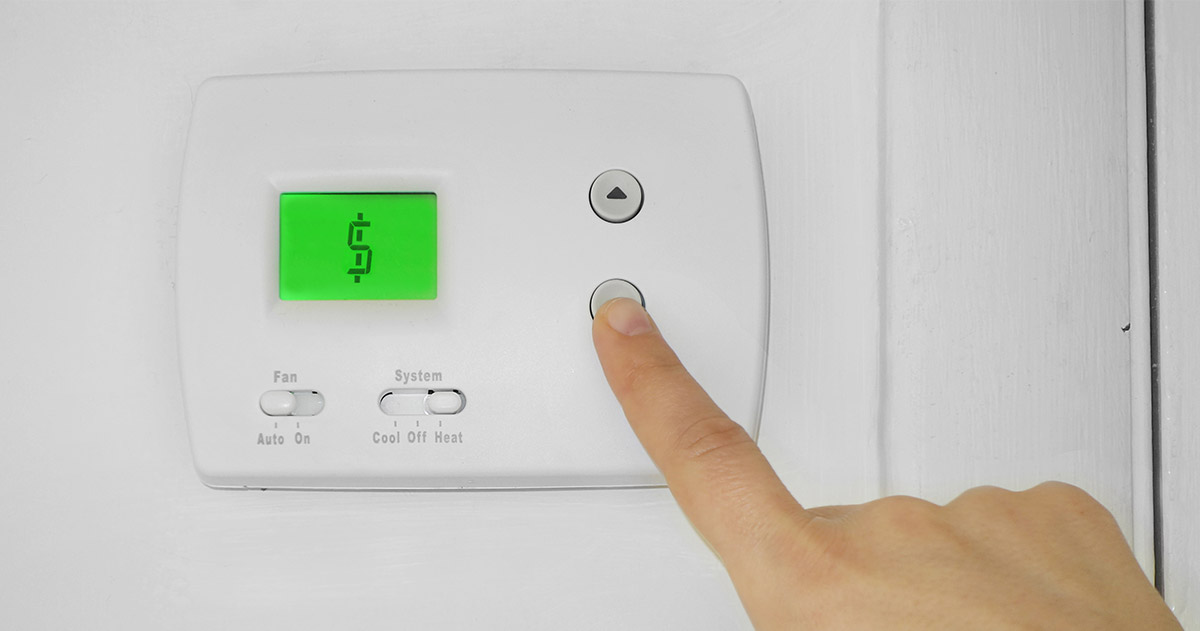
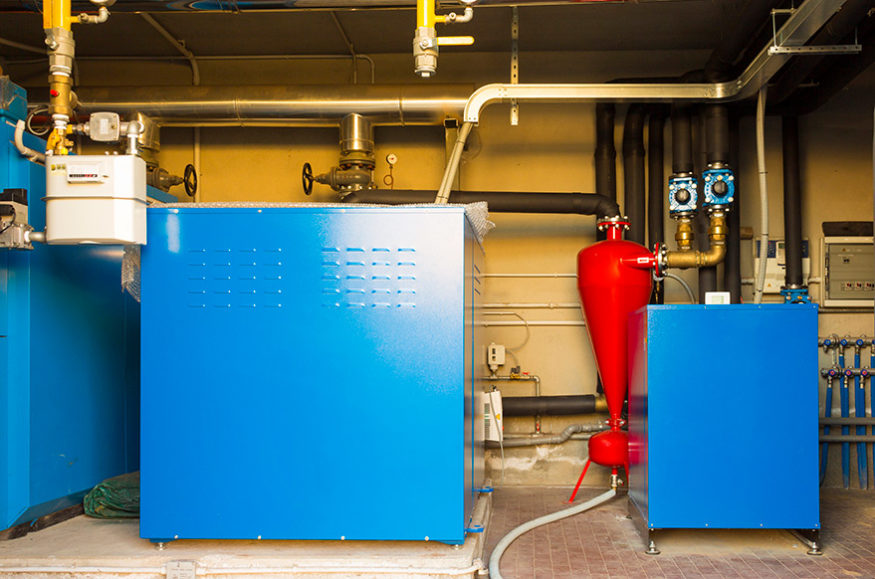
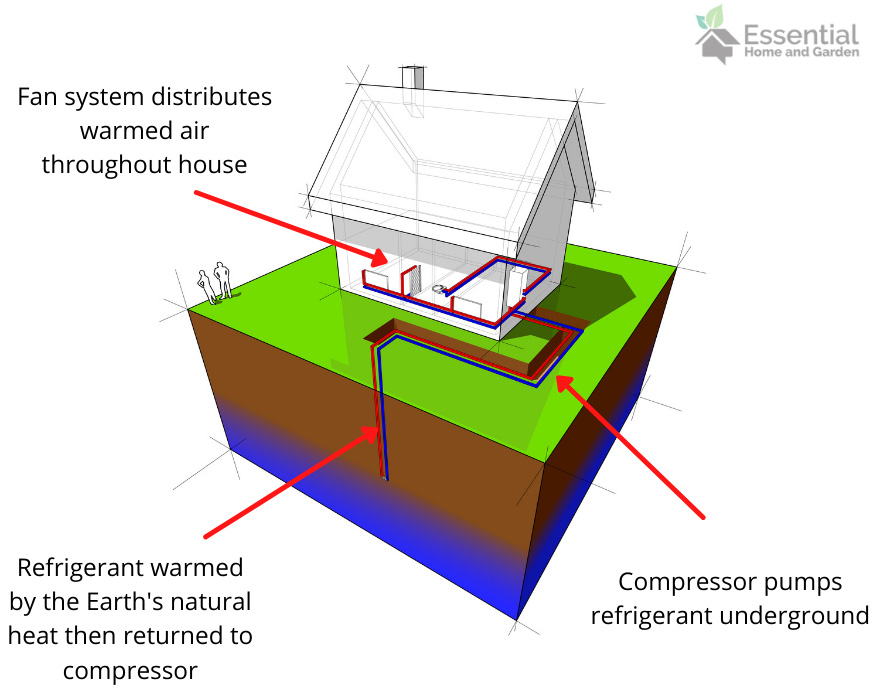
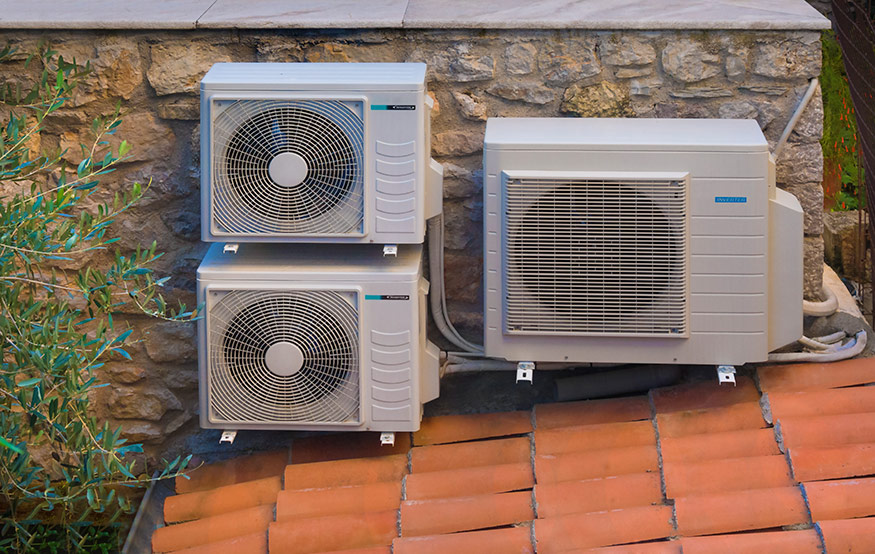
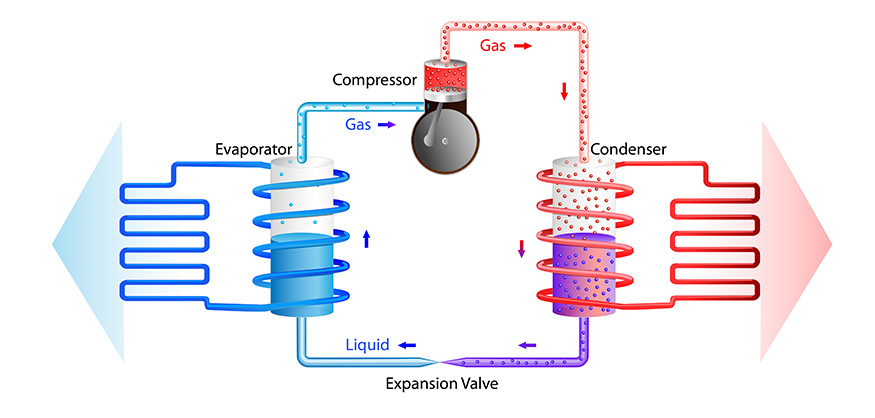
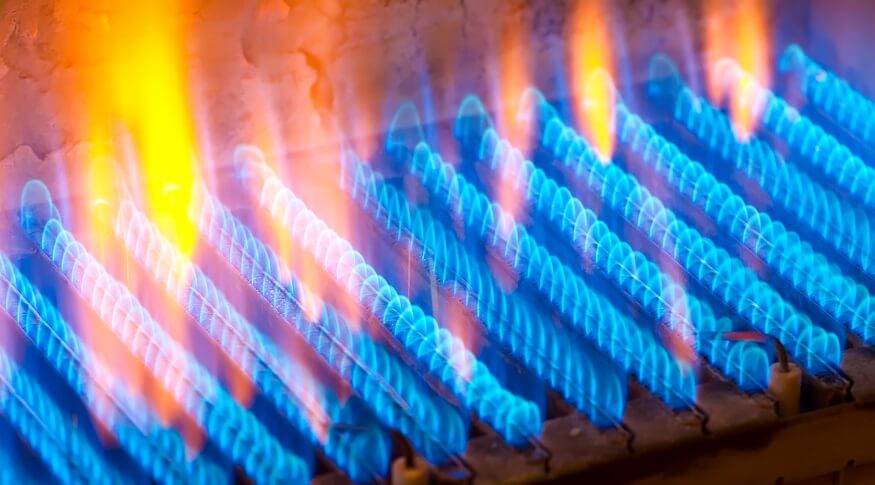
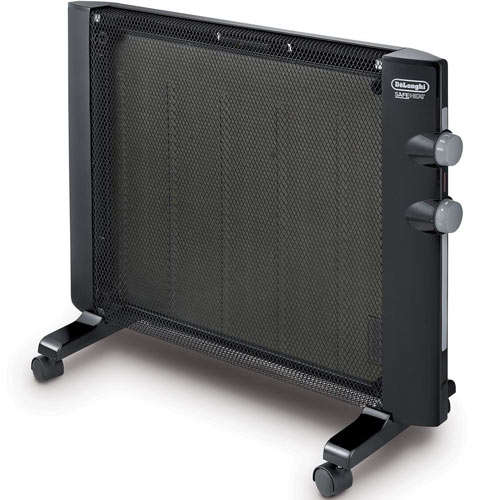
I have a system that uses hot water it distributes this hot water to cast iron radiators. Right now the system is connected to an oil burner. Because of elevated heating oil cost, I am contemplating to replace it with a natural gas burner. The yearly bill is $3984 for 2022